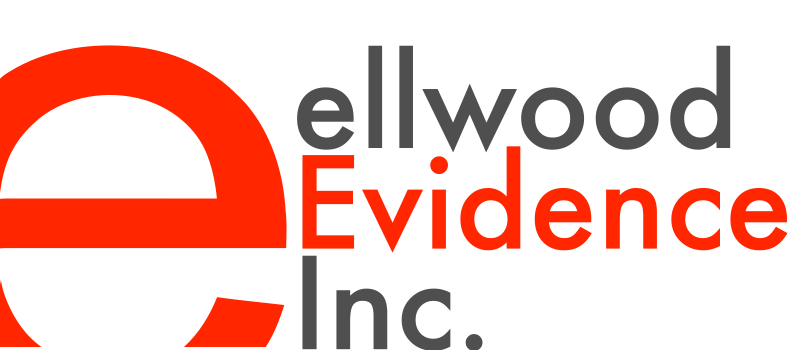Tips on e-Discovery from One Who Knows: Michelle Nash
We at ellwood Evidence are proud of our team. The quality and range of skills make us really good at what we do.
From time to time, however, we team up with some of the best people working in the litigation technology space. One of those people is Law Clerk extraordinaire Michelle Nash, President of M. Nash Consulting.
With 28 years’ experience in the litigation world, Michelle can do just about anything. One special area of her expertise is e-Discovery. Over the years, Michelle has mastered, as few have, the intricacies of collecting, preserving and processing electronic documents.
We were recently working on a case with Michelle. She exchanged with us her insights on conducting e-Discovery successfully. e-Discovery is a complex process, but these tips from Michelle can make it simpler and ensure its effectiveness.
Over to you MIchelle:
The Litigation Hold
My first question when I’m hired is always: Have you sent out your litigation hold letter?
The letter should be sent out as soon as the retainer is signed. This is often not the case.
I also ask these questions of each potential custodian:
Are you aware there is a litigation hold in place?
Do you know what this means?
When did you become aware of it?
Are you following the litigation hold?
I remind the lawyer to send out a follow up letter throughout the litigation process, reminding the client that the litigation hold is in place until completion of the litigation.
Watch out for this: People come and go from organizations, and often the need to retain data is not passed on to new hires. This is especially important to keep in mind for IT departments.
When the case is over, don’t forget to notify everyone that the litigation hold is lifted.
Identifying the Custodians
Identify whom you need to start speaking with.
Once I know which potential custodians I need to start interviewing, my list always grows.
I like to know the workflow process within every organization.
Who reports to whom.
What data is created in the work flow.
What data results from the workflow process.
Let the client know that, in doing the interviews, you are pre-culling data sources and identifying keyword search terms that will save them money in the long run, as you can make your data collection more focused, and ensure that the keyword search terms are refined enough to limit the amount of false positive hits.
Be prepared to explain why (a) you need to interview new custodians whom the client was not aware of, and (b) the role that new custodian played.
The Key Player List
Review the pleadings to come up with a key player list (includes name, company, title, comment (including the role the individual played and who they interacted with), reference to pleading paragraph, identified email addresses, possible data sources, collection date).
Speak with the legal team after giving them the first draft of the key player list. Then speak with a contact at the client's office to get them to fill in other people involved who may not have been mentioned in the pleadings. Never forget that behind every good executive is usually an executive assistant who drives everything and is a huge potential data source.
The list allows the legal team to have a quick reference throughout the litigation. It is a great cross-examination tool for the legal team when productions are exchanged.
The list is an ongoing work in progress. I update it throughout the process.
Get the client's understanding of the opposing parties’ key players, and the relationship of those players to the client's own people.
Self collection
Don’t do it.
A law clerk should never collect data. Staff should never collect data. The in-house IT staff should never collect data.
If the client self-collects, the entire team is open to cross-examination on why and how the data was collected.
Staff often know too little about the technology and architecture behind a proper collection, but way too much about a company’s proprietary processes. When the barn door opens on cross-examination, everything is open to scrutiny.
Search Terms
I like to come up with a cursory list of keyword search terms early in the case.
Along with the search terms, I create what I call my "and not these" terms, as well. No matter how careful you are in creating your list of search terms, you will always have false positive hits that will require culling, so the “and not these” terms track what you are culling out of the collection and why you are culling them.
The list is always a work in progress. The keyword search terms need to be tested and revisited at an early stage in the data collection process, to ensure they are not too broad nor too narrow.
I cross-reference the keyword search terms with the pleadings, so that if anyone disagrees with the suggested search terms, I can point them to a specific reference.
The list must be defensible.
The culling terms must also be defensible.
Inevitably, you get false positive and false negative hits. You need to be able to answer for them.
Date Range
The date range of relevant data is also important to determine prior to collection. There may be different ideas about when the relationship between the parties began, and when litigation was anticipated.
Start out as broadly as possible in the date range, narrow down in culling. You do not want to have to go back and re-collect!
Don’t Forget the Paper
We sometimes forget that paper is still generated, despite the fact that we work in a digital world.
I like to keep track of what actual paper is generated and what happens to it.
Many a case is won or lost on handwritten notations on a paper document.
